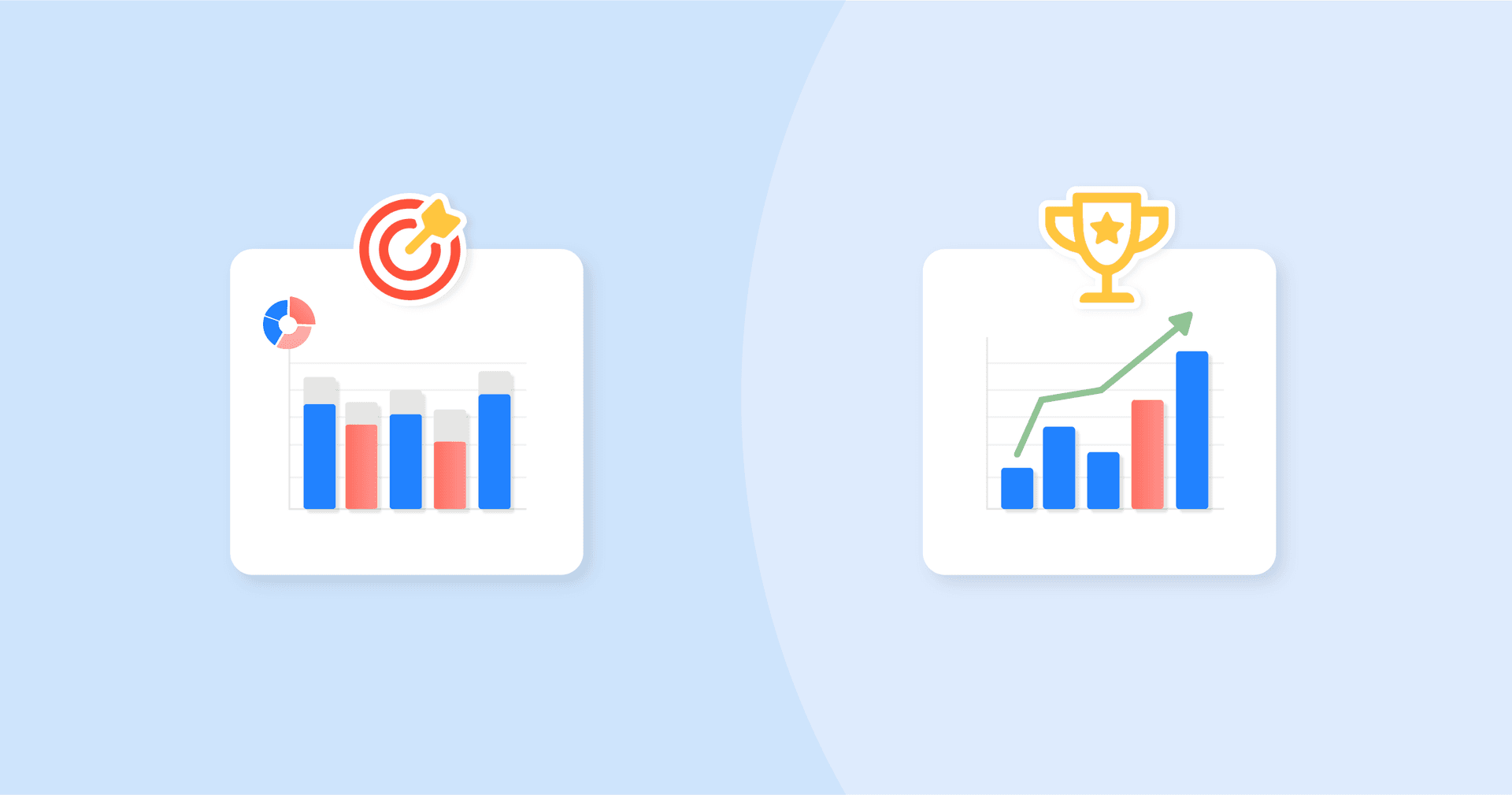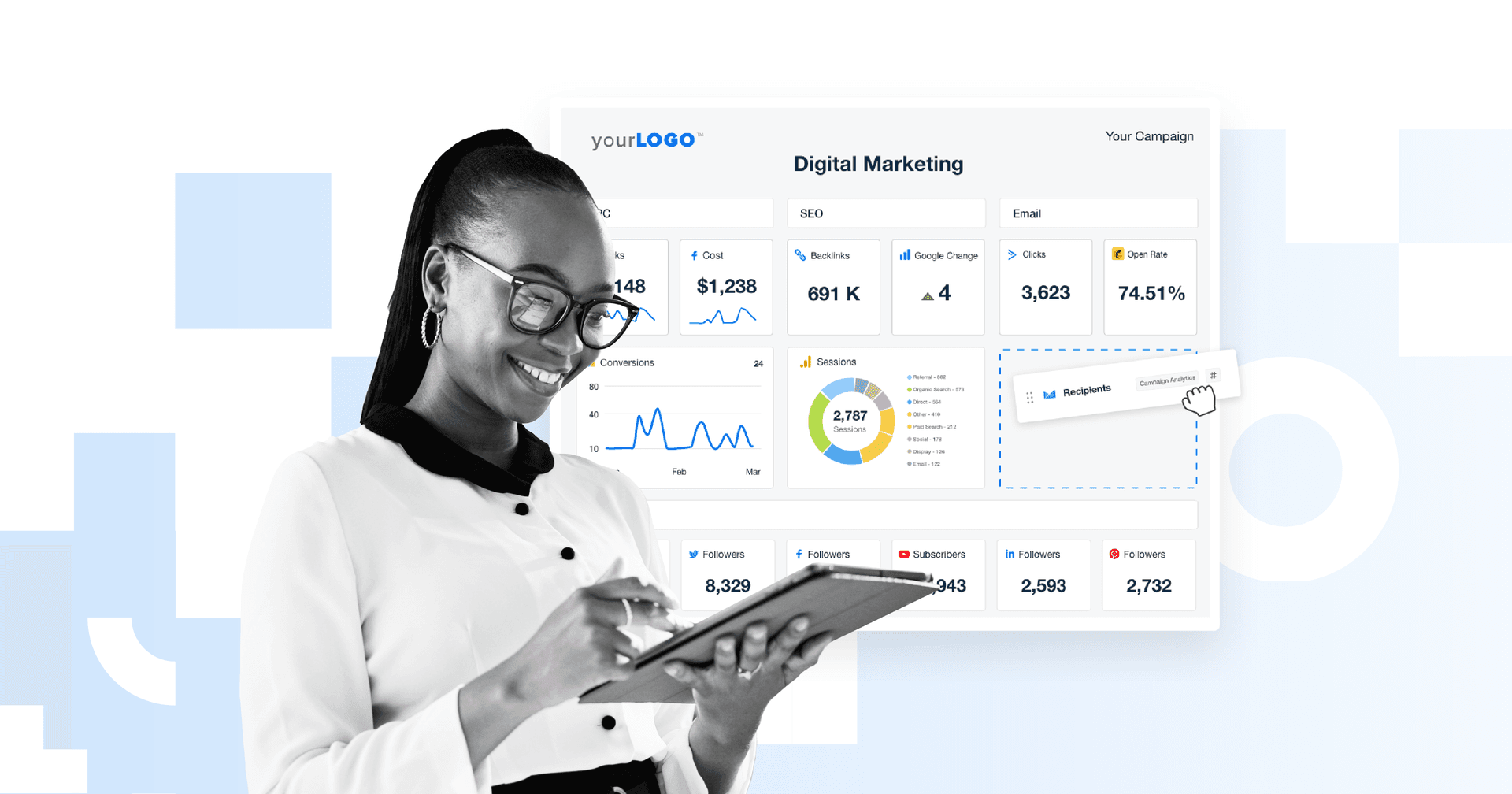Table of Contents
Table of Contents
- Unpacking the Essentials of KPI Tracking
- Crafting KPI Dashboards
- The Art of KPI Data Collection
- Streamlining KPI Reporting for Stakeholders
- 5 Benefits of a Key Performance Indicator Tracker
- Leveraging KPI Tracking Software for Growth
- Advanced Tactics for KPI Optimization
- Navigating Common Challenges in KPI Tracking
- Summary & Key Takeaways
7,000+ agencies have ditched manual reports. You can too.
Free 14-Day TrialQUICK SUMMARY:
KPI tracking is the process of monitoring and analyzing Key Performance Indicators (KPIs), which are specific, quantifiable metrics used to evaluate the success and progress of a business, project, or campaign. This guide offers practical tools for implementing an effective KPI tracking system, crucial for informed decision-making and driving agency growth.
Effective KPI tracking involves more than just monitoring numbers. It requires a strategic selection of important metrics that align with clients' goals, paired with proficient use of Key Performance Indicator (KPI) monitoring tools. This approach ensures that every decision is data-driven, providing a clear roadmap for agency efficiency and success.
Imagine a world where every decision is backed by solid data, where "guesswork" is as outdated as dial-up internet.
This guide is your playbook for turning client data into actionable insights that drive efficiency, sharpen strategies, and deliver results that make your clients beam with satisfaction.
Unpacking the Essentials of KPI Tracking
KPI tracking encompasses the tools and techniques employed to oversee performance metrics, laying a solid foundation for assessing performance, fostering growth, and enabling data-driven decisions aligned with measurable objectives.
KPIs keep us accountable. KPIs provide the client transparency into what work we deliver and most importantly, KPIs demonstrate that we are on track and achieving mutually agreed upon goals.
David Krauter, SEO Strategist, Websites That Sell.
KPIs are a guiding north star that lead businesses towards their strategic goals. They serve as quantifiable metrics that assess performance and track progress toward specific objectives.
However, not all metrics qualify as KPIs.
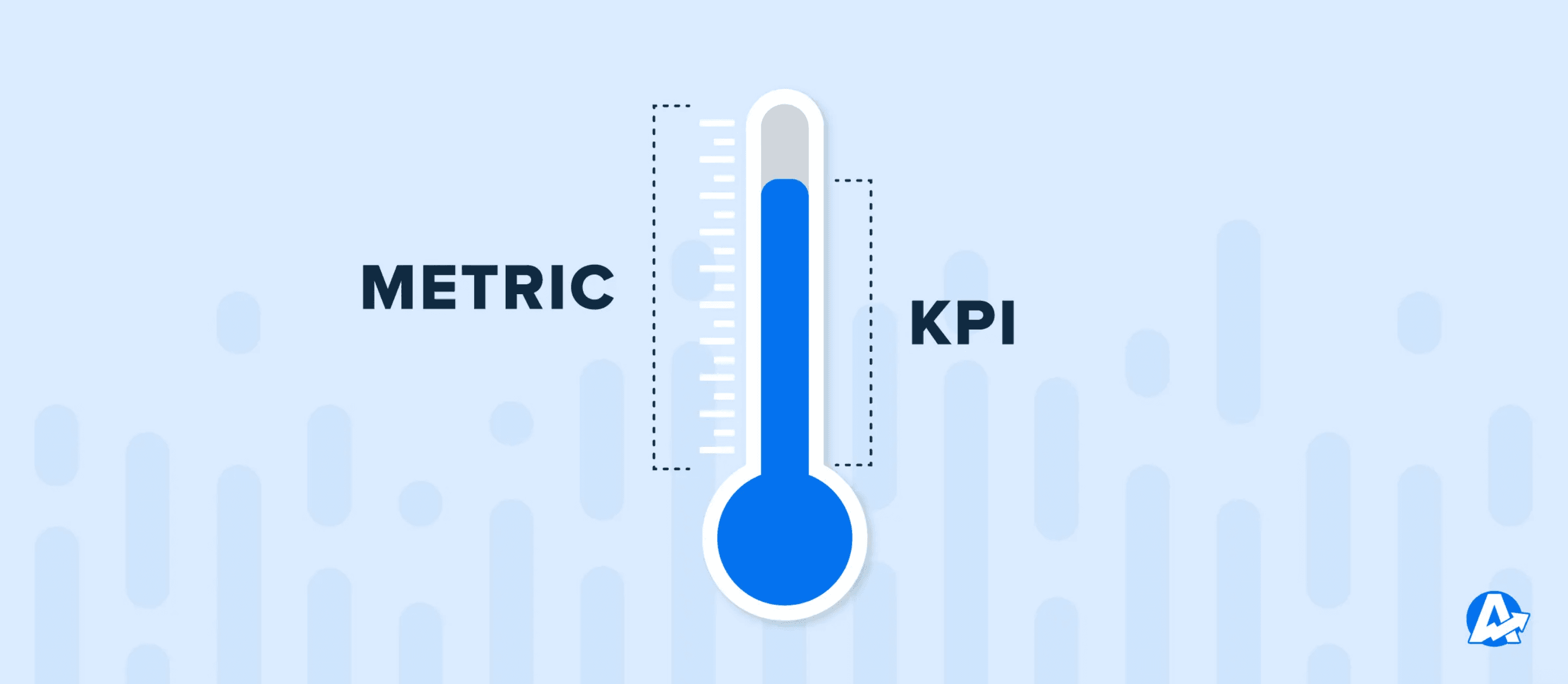
The real power of KPIs lies in their ability to provide high-level insights and gauge the advancement towards organizational objectives. Therefore, selecting the right KPIs that align with your client’s business goals is key to success.
You might wonder, how can you confirm that the chosen KPIs accurately reflect your client’s performance? Accurate KPI monitoring is vital for making informed decisions, and identifying areas for improvement. By incorporating real-time and historical data in KPI tracking, agencies will:
Get a snapshot of the current situation.
Enable early identification of issues or challenges.
Facilitate trend identification and performance comparison for assessing improvement.
Defining Key Performance Indicators
While the concept of KPIs might seem straightforward, defining effective KPIs is a complex task. The key is to ensure that each KPI is a true indicator of performance and possesses the additional characteristics that signal effectiveness.
Ask your clients what data they want to see. Often this is related to their KPIs. But also don't just leave it at the report going out. Talk the client through the report as the more you talk to them the more you get to know them and identify other opportunities.
Paul Morris, Managing Director, Superb Digital
It’s like picking the right ingredients for a recipe–the outcome depends on the quality and types of ingredients you choose. Some characteristics of effective KPIs include:
Actionability,
Measurability,
Relevance to the specific area of focus, and
Accuracy
By considering these characteristics, you ensure that KPIs are meaningful and provide valuable insights into your client’s performance.
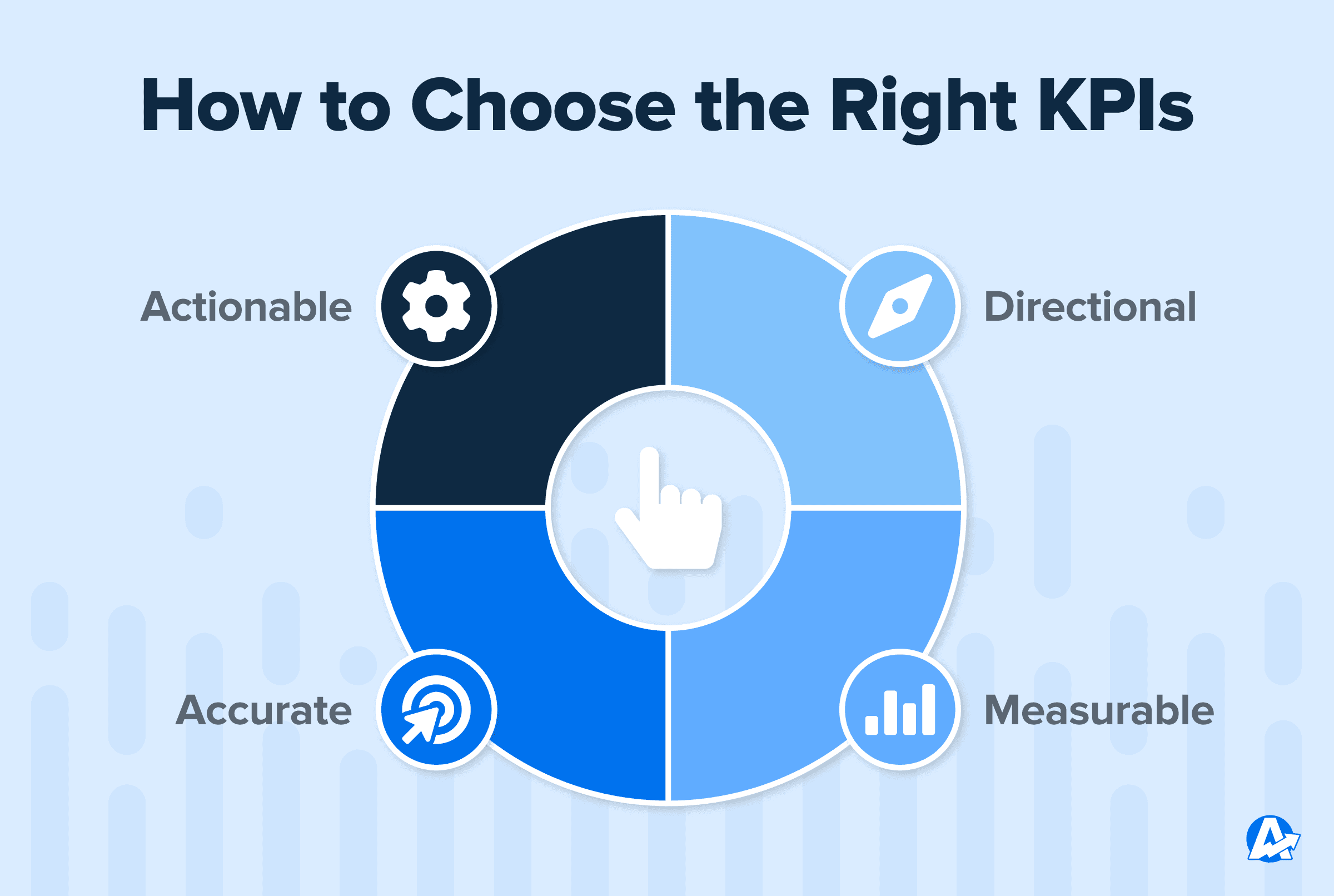
Remember that not all KPIs are created equal. Some KPIs offer a more detailed understanding and illuminate the overall performance in fundamental areas, while others offer high-level insights into specific campaigns or strategies.
The goal of KPIs is not to flood your clients with data but to offer valuable insights that guide the decision-making process.
The Importance of Accurate KPI Monitoring
Although defining the correct KPIs is fundamental to effective tracking, their true value is realized through accurate monitoring.
KPI monitoring is like the compass that guides a ship–it shows where you are and directs you toward the destination. For an agency, that destination is effective campaigns, positive Return on Ad spend, and happy clients.
Accurate KPI monitoring plays an important role in decision-making and growth. This process helps identify areas needing improvement, thereby contributing to the overall success of the client and the agency.
Accuracy establishes and nurtures trust, and trust is the most vital ingredient in a good client relationship and in client retention.
Lorianna Sprague, Vice President of Marketing, Trusted Search Marketing
Real-time insights are particularly valuable. They offer an immediate understanding of current operations, allowing for quickly identifying and addressing emerging challenges. For example, a marketing agency might notice a sudden drop in website traffic for a client. They prevent long-term negative impacts by immediately investigating and addressing the issue, such as adjusting a PPC campaign or technical SEO issues.
On the other hand, historical insights are essential for recognizing trends and evaluating performance over time. This is especially useful for comparing current campaigns against past ones to assess progress and effectiveness. An agency could, for instance, compare the engagement rates of a current social media campaign to those from previous periods to evaluate improvements or areas needing further refinement.
Consistent and accurate monitoring of KPIs enables marketing agencies to maintain an engaged client base. By providing actionable insights based on real-time and historical data, agencies drive business growth for their clients and themselves.
Crafting KPI Dashboards
Now that we’ve unpacked the essentials of KPI tracking and understood their significance, let’s move on to creating a KPI tracking dashboard–a tool that visualizes KPIs and gives your agency and clients an at-a-glance view of business performance.
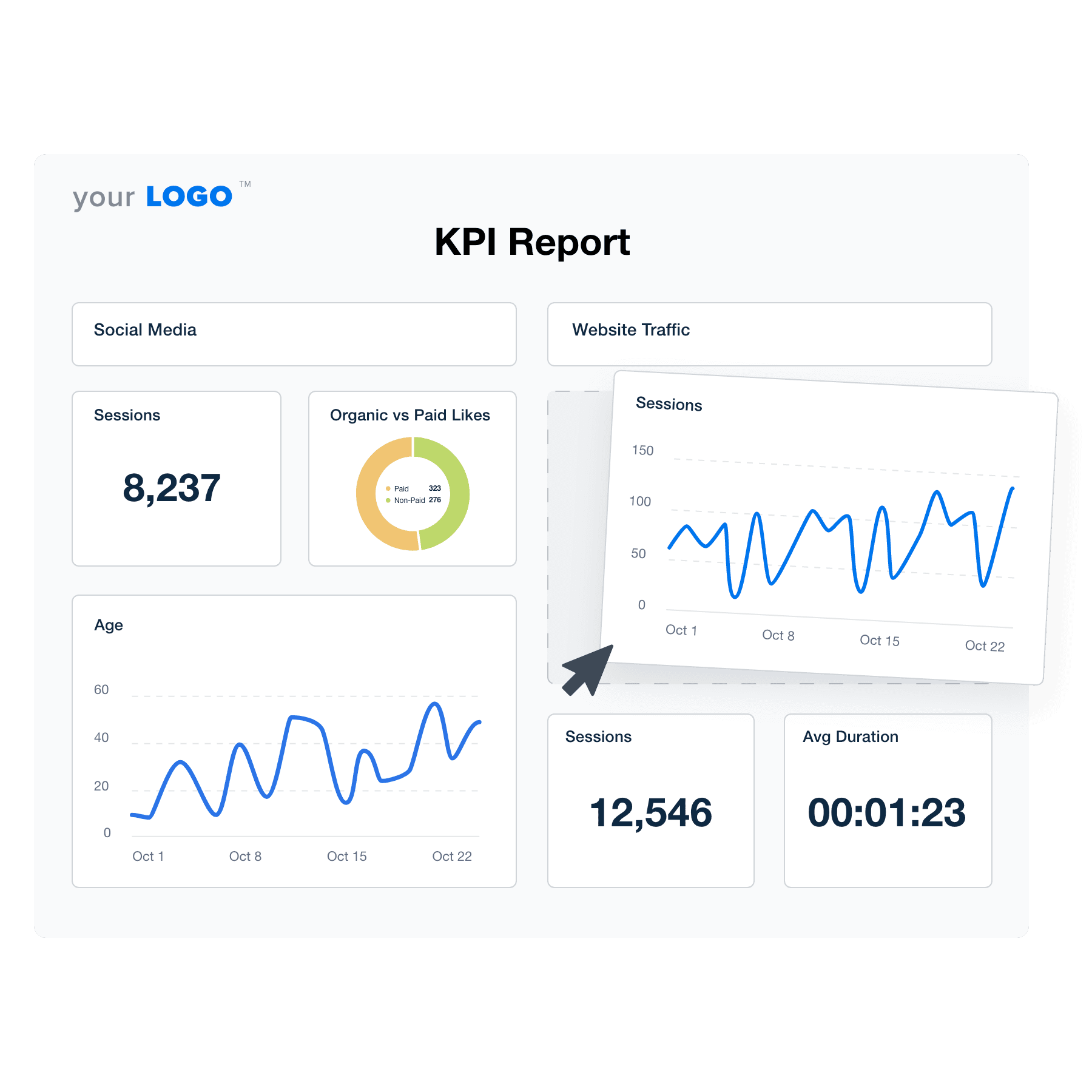
To create KPI dashboards that reflect your client’s business objectives accurately, it’s essential to group cohesive KPIs that collectively measure progress in a specific business area.
We provide active campaign dashboards to our client within 10 days of launch and then typically schedule monthly summaries/reviews. We want our clients to be able to access their campaign metrics in real time.
Ashlee Brown, Campaign Performance Manager, i76 Solutions
Remember, an automated KPI dashboard is a visual representation of business or campaign performance, and it should be designed with precision.
Selecting the Right KPIs for the Dashboard
Just because a metric can be tracked doesn’t mean it should be tracked. The key lies in selecting KPIs that are directly in line with your client’s objectives.
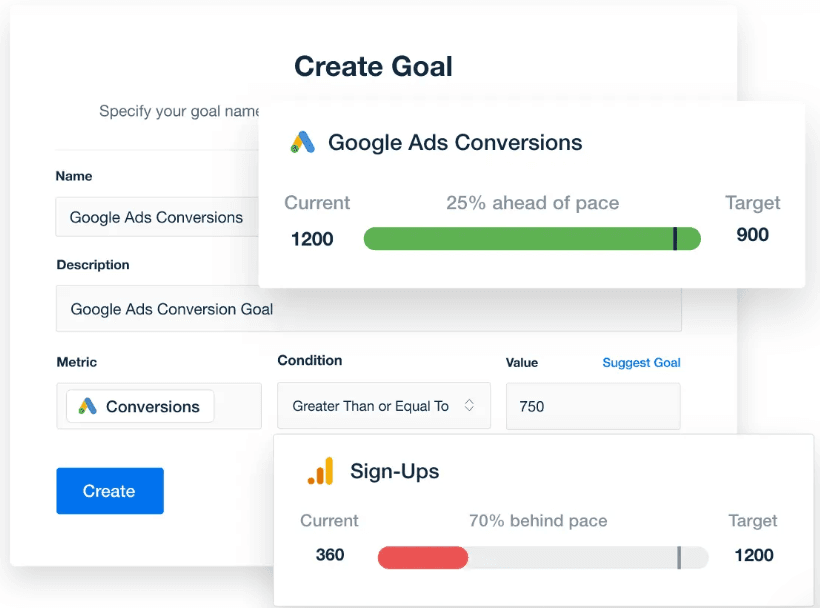
When selecting key performance indicators, it’s important to ensure that they are closely tied to your client’s business strategy and goals.
For example, if the business aims to enhance customer satisfaction, metrics like Customer Satisfaction Score (CSAT), Average Rating, Customer Churn Rate, and Net Promoter Score (NPS) would be relevant KPIs. The goal is to choose KPIs that measure performance and drive strategic action.
Visualization Techniques for Clear Communication
After selecting appropriate KPIs for your dashboard, the subsequent step involves presenting them in a comprehensible manner. This is where data visualization tools and techniques come into play.

Visualization techniques are like the secret sauce that makes KPI data palatable and easy to understand. They present KPI data visually, enabling quick and effective interpretation.
It's very difficult to explain the value of a service to a client without visuals. Using the web analytics report and the SEO reports side by side helps us show our clients a correlation between SEO and Traffic. We merge this data with a custom template that tracks conversions, and Stripe data to show that traffic growth–from SEO and PPC–does have an impact on the number of conversions and revenue (their bottom line).
Ruben Roel, President, Investigator Marketing
Some popular visualization techniques include:
Bar charts
Line graphs
Pie charts
Scatter plots
Heat maps
Bar graphs and line charts are commonly used for comparing values, whereas pie charts are used for showing percentage or proportional data. The key is to choose a visualization technique that best represents the nature and purpose of the KPI.
A user-friendly reporting interface with drag-and-drop features makes this process even more seamless and efficient.
By using these techniques, you transform KPI data into visually appealing and easy-to-understand assets that will help you and your clients make informed decisions and track progress effectively.
The Art of KPI Data Collection
Once you have the appropriate KPIs and an effective visualization technique, the next step in the KPI tracking journey is collecting data. KPI data collection is the fuel that powers the KPI engine. Without accurate and consistent data, your KPI tracking would be akin to shooting arrows in the dark.

Automating the data retrieval process streamlines analysis and reporting, ensuring data quality and consistency. Eliminate the cumbersome process of manually copying and pasting data from multiple systems or formats, and reduce the human errors associated with data handling.
Just as each piece is vital in completing a jigsaw puzzle, every data point is essential for a complete analytical picture. If the data is flawed or incomplete, so is that analysis.
Provide clarity by bringing all the data sources together under one roof. The ability to leave comments/analysis on every part of the report is also helpful to clients because it helps explain each part of the report with fewer words.
Adam Binder, Founder + CEO, Creative Click Media
Data quality can significantly impact the reliability of KPI tracking and analysis. It’s important to focus on the following aspects of data quality:
Completeness
Uniqueness
Freshness
Validity
Accuracy
Consistency
By maintaining high data quality, you ensure that KPI tracking is based on reliable and accurate data, thereby enabling more informed decision-making.
Integrating Multiple Data Sources for Comprehensive Analysis
According to the 2024 Client Reporting Benchmarks Report, the average marketing agency works with 3-10 different marketing platforms.
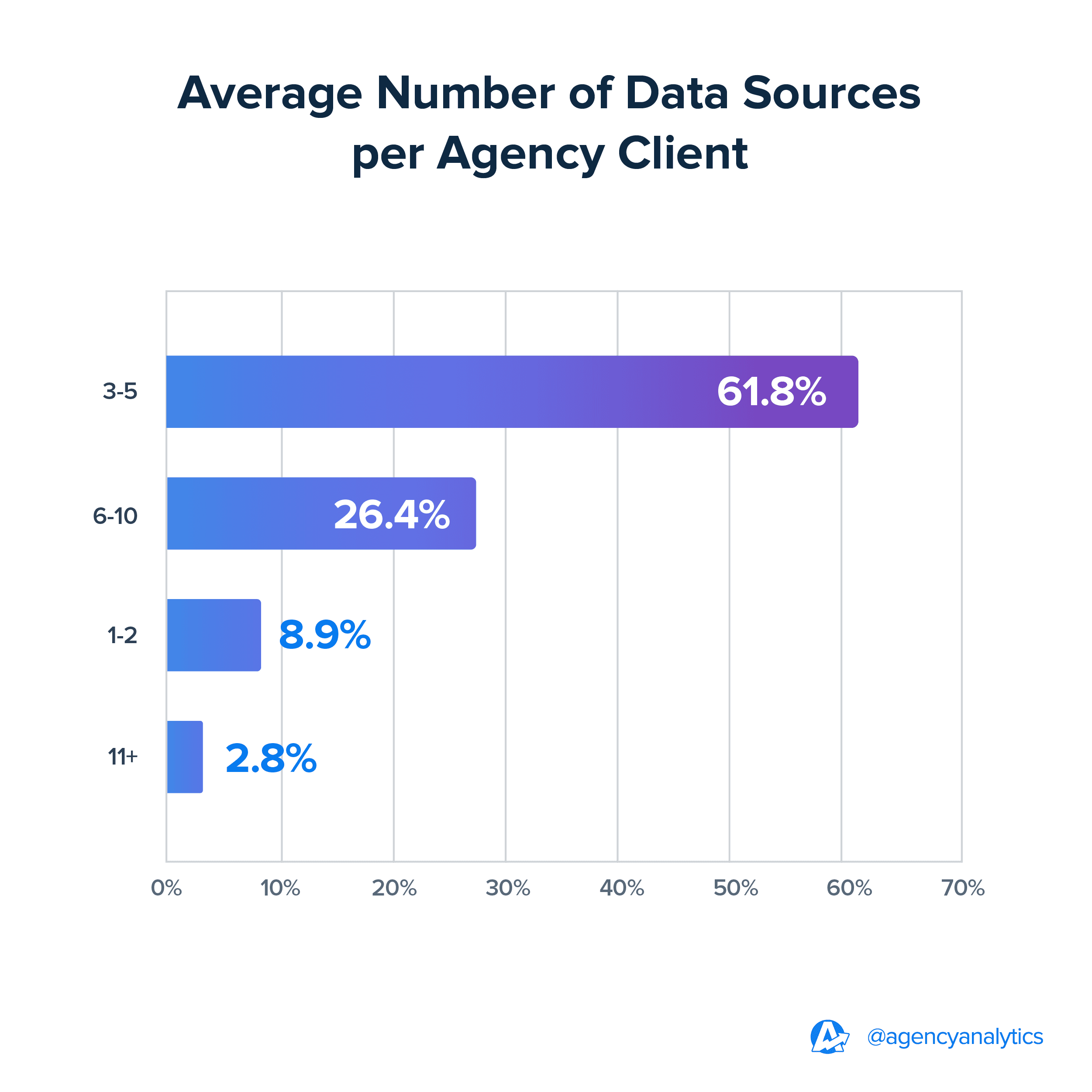
Integrating data sources is like weaving together different threads to create a beautiful tapestry. Data integration involves the consolidation of data from multiple sources to obtain a comprehensive view of performance. Without integrating various data sources, you might be missing out on valuable insights that could drive your clients’ business growth.
However, data integration is not without its challenges. Digital marketing data typically resides in different systems, in different formats, and may even have different definitions across different platforms. The more data sources your agency, and your clients, work with–the more complex this becomes. Therefore, it’s crucial to establish a clear data integration strategy that includes identifying data sources and consolidating data management systems.
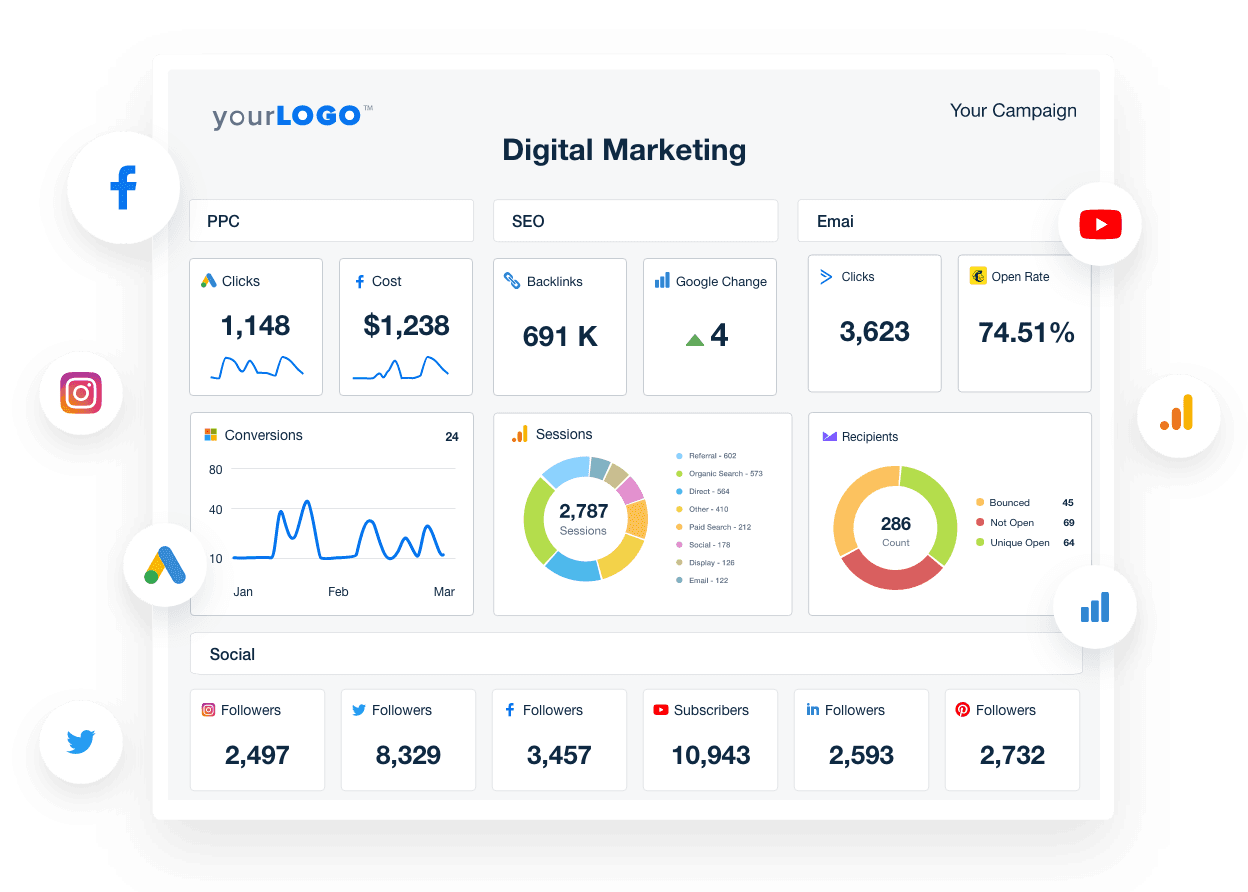
Integrate data from over 80 marketing platforms to ensure a comprehensive analysis of your client’s KPIs. Try AgencyAnalytics free for 14 days.
Ensuring Data Quality and Consistency
While collecting client data is important, ensuring its quality and consistency is what truly makes KPI tracking a powerful ally to marketing agencies.
Imagine trying to make sense of a book filled with typos and inconsistencies–the same applies to KPI data. Without quality and consistency, the data is likely to result in inaccurate insights and misguided decisions.
This step is about making sure that the data is complete, up-to-date, accurate, and consistent across all sources.
Maintaining high data quality and consistency ensures that KPI tracking is based on reliable and accurate data, enabling more informed decision-making and fostering client or customer loyalty.
We customize reporting based on what service the client has hired us for. Additionally, each client has their own goals and KPIs for showing success. This means there are a lot of places to look for and grab information to report. AgencyAnalytics has really simplified and streamlined the information gathering process.
Nathan Hawkes, President, Arcane Marketing
Streamlining KPI Reporting for Stakeholders
After collecting and analyzing KPI data, the subsequent step involves presenting the findings to your stakeholders, including clients or agency leaders. KPI reporting is the bridge that connects the data to the people for whom it matters most. It not only informs them about the overall performance but also provides insights into how your agency is progressing towards their goals.
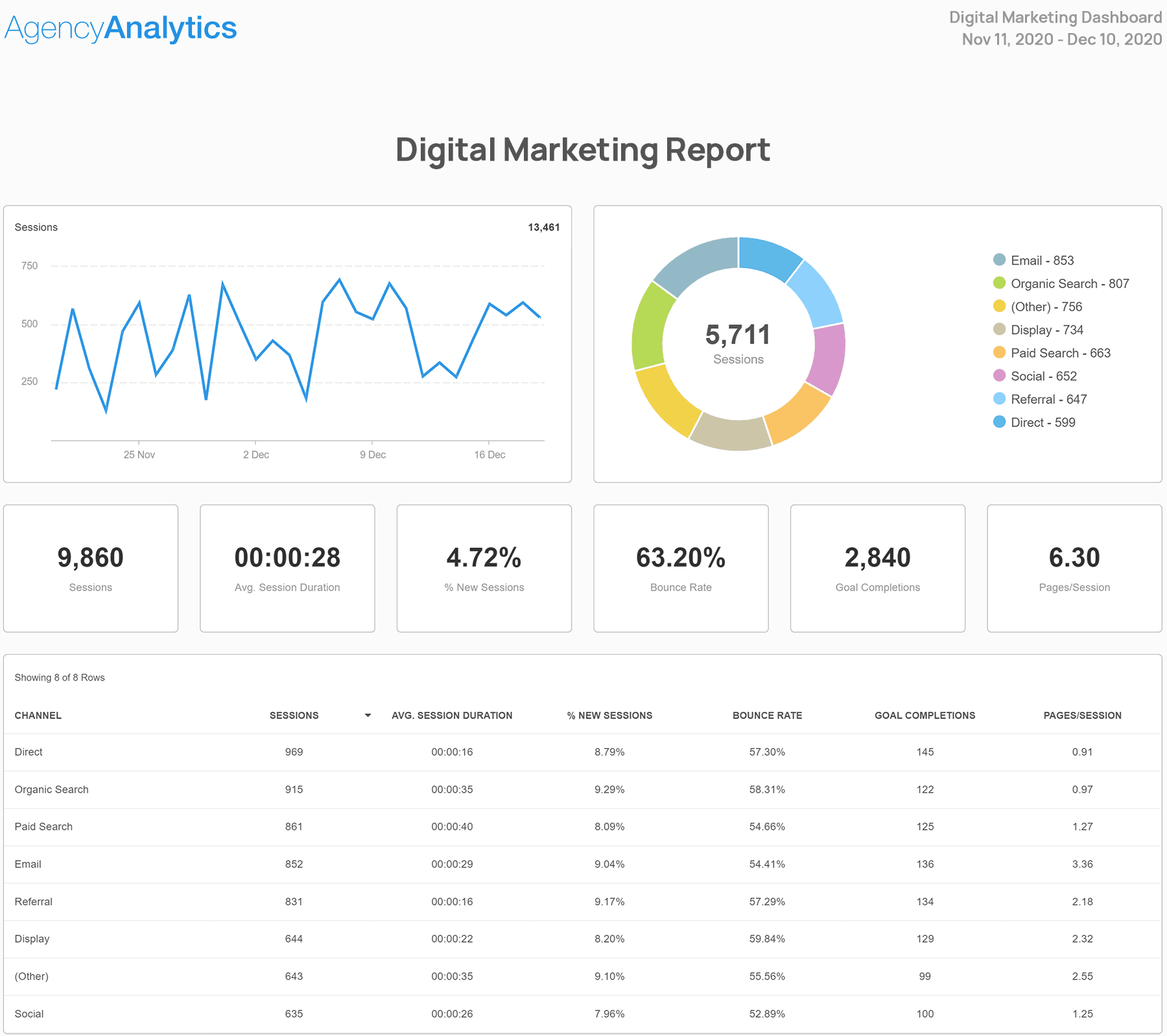
Use a customizable KPI report template or a Digital Marketing Report template to create client-facing reports in minutes. Try AgencyAnalytics free for 14 days.
Keep in mind that not all stakeholders are interested in the same metrics. While your internal marketing team might be interested in website traffic and social media engagement, your client’s sales team might be more interested in customer acquisition cost and conversion rates.
Therefore, it’s crucial to tailor your KPI reports to different audiences.
Effective KPI reporting involves:
Choosing the right metrics for each stakeholder segment.
Implementing comprehensive data quality measures.
Leveraging suitable KPI reporting tools.
Establishing a streamlined reporting process that fosters confidence and facilitates thorough issue investigation.
Remember to tell a story that resonates with your stakeholders and drives action.
It's our job to tell a simple story through reporting to our clients. The report is the client's proof that what we are doing is benefiting their business in a positive way.
Brian Ferritto, Partner, 42connect
Tailoring Reports To Different Audiences
KPI reports should be tailored to meet the specific needs of different stakeholders. Senior leaders might be interested in financial metrics like net profit margin and annual revenue, while marketing teams might be more interested in metrics like website traffic and social media engagement.

Tailoring reports to different audiences involves understanding their specific needs, selecting relevant KPIs, and presenting them in a format that is easy to understand and digest.
By customizing your agency’s KPI reports, you ensure that your specific stakeholders receive the information they need in a format that they can easily understand and act upon.
5 Benefits of a Key Performance Indicator Tracker
For marketing agencies, a Key Performance Indicator tracker transforms the way teams monitor and report on essential business metrics. By consolidating client data from 80+ data sources into one streamlined platform, agencies gain a powerful tool for efficient, accurate, and real-time KPI tracking.
Here’s how a dedicated KPI tracking platform amplifies agency productivity:
1. Automated Data Collection Reduces Manual Work
With an integrated KPI tracker, your agency says goodbye to hours of manual data collection. Instead of piecing together information from various platforms, a KPI tracker automatically pulls data from key marketing tools—such as Google Analytics, social media channels, and PPC platforms.
This automation saves time and reduces the risk of human error, ensuring that your client reports are consistently accurate and complete.
2. Real-Time Insights for Proactive Decision-Making
One of the most valuable aspects of a key performance indicator tracker is access to up-to-date data. Instead of waiting until month’s end to analyze performance, your agency monitors KPIs in real time, allowing you to catch and address potential issues before they escalate.
For example, if a social media campaign isn’t meeting engagement targets, automated tracking and customized campaign performance alerts makes it easier for your team to adjust strategies on the fly, optimizing outcomes and demonstrating your agency’s responsiveness.
3. Comprehensive Visualization for Clearer Communication
Visualizing KPIs in charts, graphs, and dashboards transforms raw data into actionable insights, making it easier for both your team and clients to understand performance at a glance.
A KPI tracking platform helps agencies create customized marketing dashboards tailored to each client’s needs, presenting complex data in a way that’s clear and compelling. This visual clarity enhances communication with clients, making it easier to demonstrate the impact of your efforts.
4. Enhanced Data Consistency and Reliability
Data consistency is critical for making informed decisions, and a KPI tracker ensures uniformity across all metrics. By centralizing data from different sources, creating custom metrics, and applying standardized measurement criteria, your agency has more accurate and comparable data over time.
This consistency not only builds trust with clients but also helps you spot trends and patterns that might otherwise be lost in fragmented data.
5. Time-Saving Efficiency for Higher-Level Strategy
By automating the grunt work of data gathering and KPI calculation, a KPI tracking platform frees up your team’s time to focus on strategic planning and execution. Rather than spending hours preparing reports, your team invests their energy in developing creative solutions, refining campaign strategies, and providing strategic insights that drive client growth.
Investing in a purpose-built key performance indicator tracker streamlines your agency’s reporting process, delivering timely, accurate, and insightful data that keeps clients informed and engaged. With faster, more organized reporting, your agency stays focused on high-level strategies that drive client success and demonstrates your value as a trusted, data-driven partner in their growth.
With custom reports, we can zoom in on the key performance indicators and metrics that matter most to our clients, making our reporting experience incredibly valuable and directly relevant to their success.

Leveraging KPI Tracking Software for Growth
Given the escalating complexity of business operations and the surge in data, the use of KPI tracking software has transitioned from a luxury to a necessity. KPI tracking software is like a GPS–it shows you where you are and guides you toward the destination.
KPI tracking software helps drive business and agency growth by:
Providing valuable insights and automating data collection and analysis.
Facilitating in-depth insights and data-driven recommendations.
Shifting the emphasis from progress tracking to identifying the most relevant metrics.
Enabling a more proactive approach to KPIs.
Allowing for rapid collection and analysis of large data sets.
By leveraging KPI tracking software to track KPIs, your agency enhances efficiency, improves accuracy, and makes more informed decisions. But the main benefit of KPI dashboard software is not just about tracking KPIs, it’s about reducing the time required to manually gather, consolidate, visualize, and check the KPIs–giving your agency time back to analyze the KPIs, develop growth strategies, and execute campaigns.
We previously used a static stats platform, it was essentially just a table with numbers on it and "%+/-" next to it. No dynamic adjustable graphs. We also didn't have any integrations hooked up, so we would have to jump around to find the stats we wanted and reporting/KPI tracking took quite a long time. This slowed down our team, extended our client calls, and was just kind of messy.
Rachel Jackson, Lead SEO, Wit Digital
The Role of AI and Machine Learning in Enhanced KPI Tracking
In the era of big data and advanced analytics, AI and machine learning are emerging as game-changers for enhanced KPI tracking. These tools have the potential to transform KPI tracking by automating data analysis and providing more accurate insights.

AI facilitates data analysis in KPI tracking by generating and updating real-time KPI dashboards, automating data analysis processes, and conducting big data analysis for comprehensive KPI evaluation.
By leveraging machine learning, agencies enhance the precision of their KPI insights and free up their teams to focus on strategic tasks, thereby driving business growth.
For example, rather than hand-picking the key metrics for each client, report templates and dashboards that tap into machine learning make that process faster and easier. Create reports based on the most important metrics from each campaign, and deliver data-driven insights in a matter of seconds using One-Click Smart Reports.
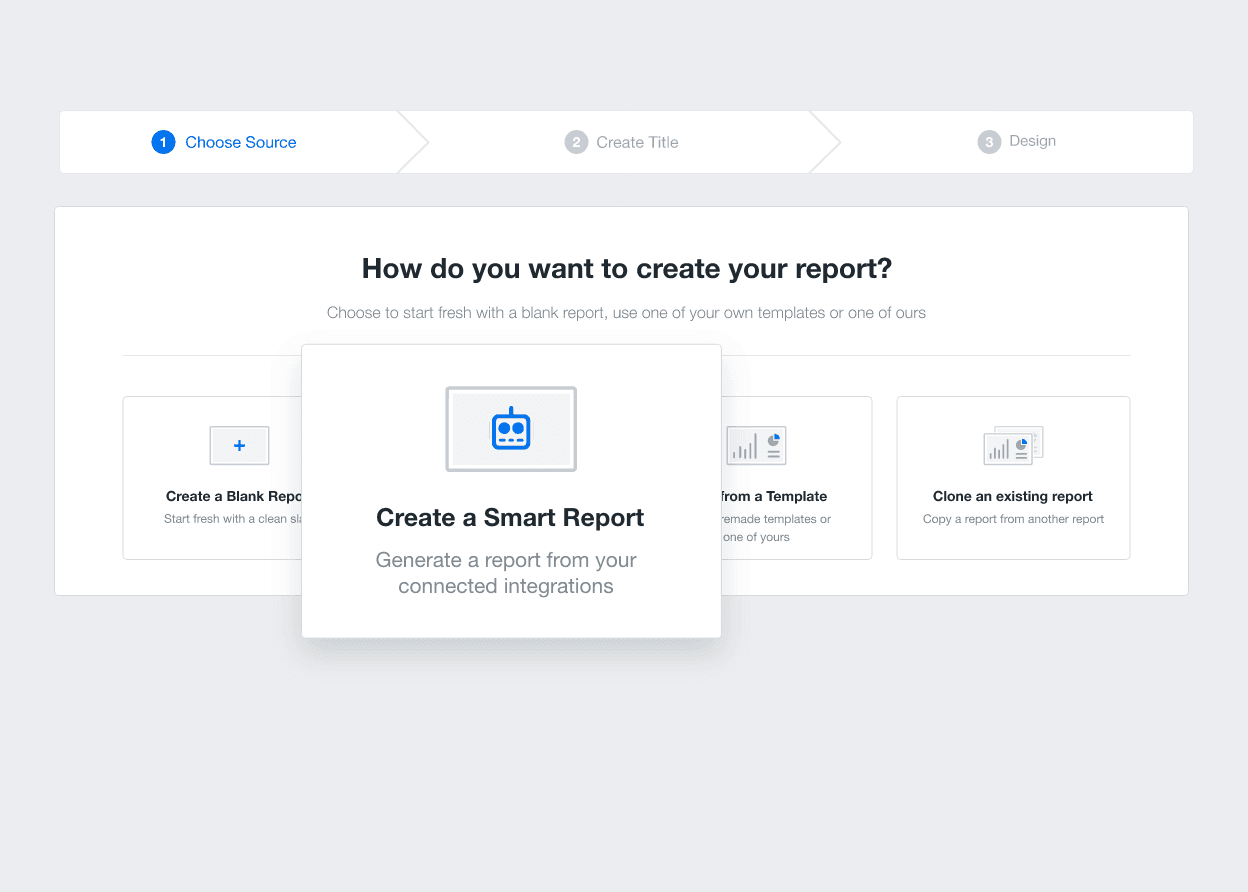
AgencyAnalytics streamlines the process of creating a KPI monitoring tool by automatically filling each section of your Smart Report with relevant metrics. Each section of the report is populated with the top-used metrics for each integration, from PPC and SEO data to e-commerce and social, saving your agency time and getting your reporting done faster.
Advanced Tactics for KPI Optimization
You’ve established your KPI tracking system, but is that the end of the journey? The answer is no. Like any other system, your KPI tracking system needs to be continually optimized to keep up with the ever-changing needs of clients. This is where advanced tactics for KPI optimization come into play.
Implementing a client budget pacing KPI tracker is a prime example of such a tactic. It's not just about preventing budget overspends or underspends; it's about gaining a granular understanding of budget utilization across campaigns, clients, or channels. This insight enables your agency to make proactive adjustments, ensuring optimal resource allocation for each client's unique needs.
Quickly and easily spot the current pacing of client budgets at the campaign, client, or channel level–whichever works best for your agency and your clients.
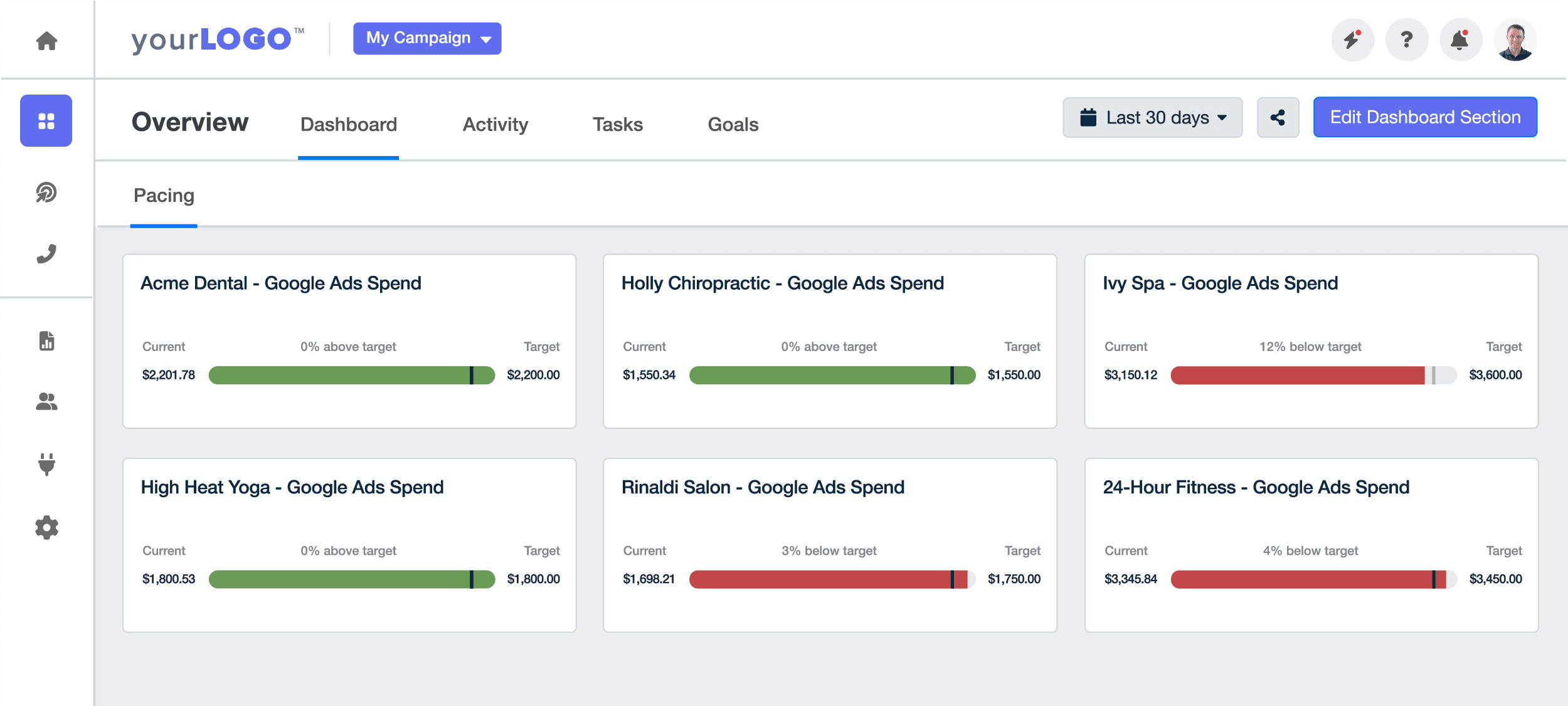
Establish custom goals to create an easy-to-monitor budget pacing dashboard. Get started with a 14-day free trial.
Expanding beyond basic tracking, consider integrating predictive analytics into your KPI monitoring. This involves using historical data to forecast future trends, helping your agency to anticipate client needs and market shifts.
Additionally, employing a holistic approach to KPI analysis can be transformative. This involves correlating data from various metrics to uncover deeper insights. For instance, combining social media engagement metrics with website traffic data reveals a clear view the effectiveness of your digital marketing strategies in driving online activities.
By leveraging these advanced tactics, your agency doesn't just maintain its KPI tracking system but becomes a powerful tool for strategic decision-making, client satisfaction, and sustainable business growth.
Analyzing and Acting on KPI Trends
Just like a detective looking for clues, analyzing KPI trends involves:
Looking for patterns and insights in KPI data.
Identifying trends.
Understanding their implications.
Taking appropriate actions to drive performance.
Effective analysis of KPI trends demands a comprehensive understanding of your client's business landscape. This involves discerning the various factors influencing key performance indicators and their interrelations.
For a marketing agency, this might include examining a client's website traffic and conversion rates in relation to their ongoing social media campaign. By identifying patterns and correlations in these metrics, the agency makes informed decisions, tailors strategies for improved performance, and contributes significantly to the client's business growth.
For instance, by analyzing past campaign performance data, your agency better predicts the potential success of similar future campaigns. Seeing a progressive uptick in Cost Per Click or Conversion Rates, working that knowledge into the KPI development process creates clearer forecasts for the next quarter.
This data-driven approach ensures decisions are not based on intuition but on solid, actionable insights derived from KPI analysis.
Balancing Multiple KPIs for a Holistic View
While focusing on individual KPIs does provide valuable insights, balancing multiple KPIs for a holistic view of business performance is equally important.
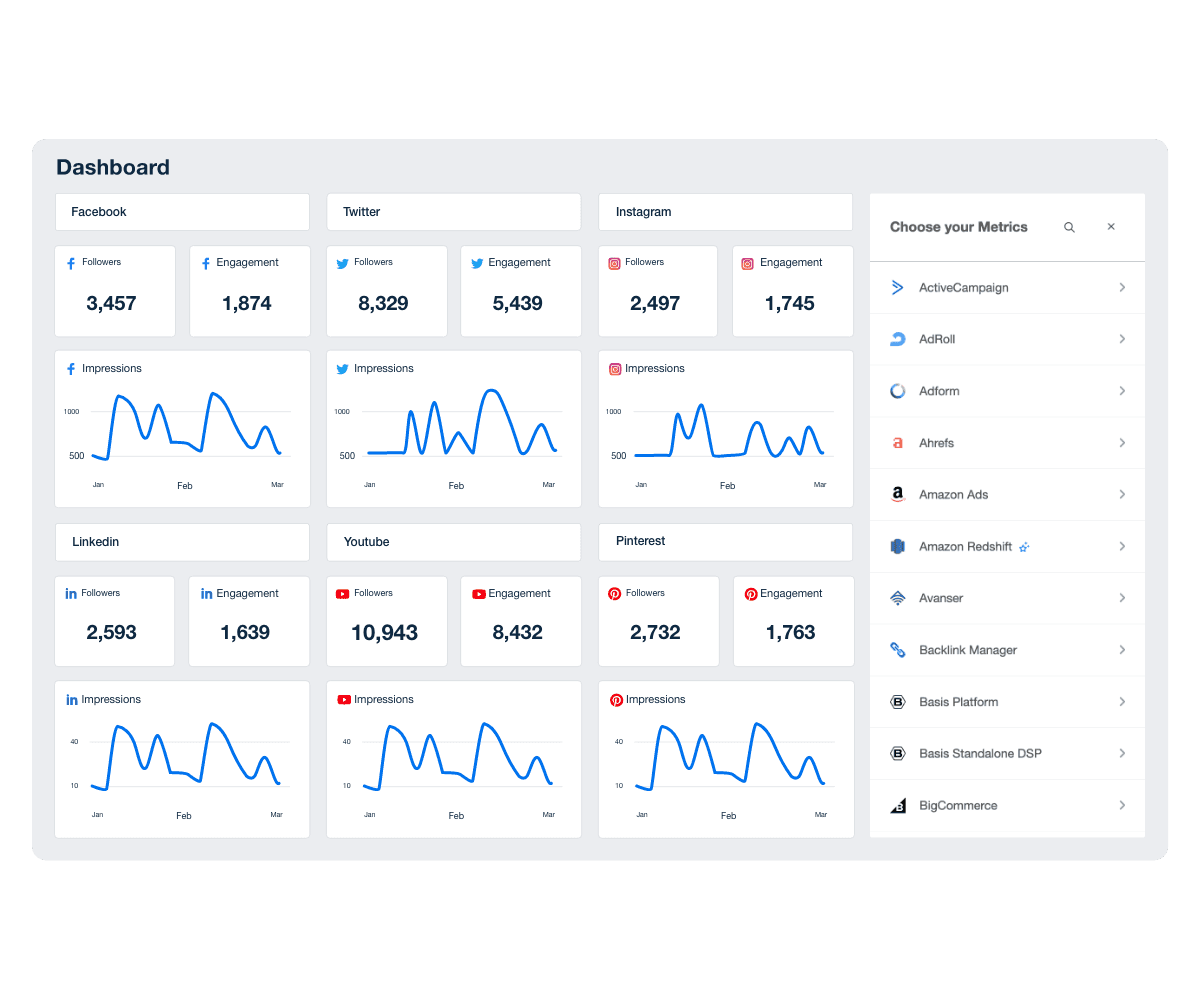
Just like a balanced diet is essential for good health, a balanced set of KPIs is crucial for a healthy business.
Balancing multiple KPIs involves:
Selecting KPIs that complement each other and contribute to each objective of the business.
Choosing the KPIs that truly matter and provide a comprehensive view of performance.
By balancing multiple KPIs, you ensure that you’re not overlooking any important aspect of business performance.
For instance, a marketing agency working on a digital campaign might balance KPIs like click-through rates, conversion rates, and customer engagement metrics. While the click-through rate measures initial interest, the conversion rate tracks actual sales or desired actions, and engagement metrics offer insight into the depth of customer interaction. Over time, agencies dig even deeper into long-term metrics such as customer lifetime value.
Together, these KPIs provide a well-rounded view of the campaign's effectiveness, helping the agency understand how many people are reached and how effectively they are engaged and converted.
Navigating Common Challenges in KPI Tracking
Despite the valuable insights KPI tracking offers into your client’s business performance, it comes with its own challenges. Some of the common challenges agencies face when it comes to KPI tracking include:
Data silos and integration issues.
Evolving business strategies for both the agency and its clients.
Lack of clear goals and objectives.
Difficulty in measuring intangible metrics.
Inaccurate or incomplete data.
Lack of employee buy-in and engagement.
Data silos disrupt the smooth integration of diverse data sources, leading to incomplete or incorrect performance insights and progress validation. Similarly, evolving business strategies pose a challenge as KPIs need to be continually adjusted to align with the changing goals and objectives.
Overcoming these challenges is crucial to ensure effective KPI tracking and drive business success.
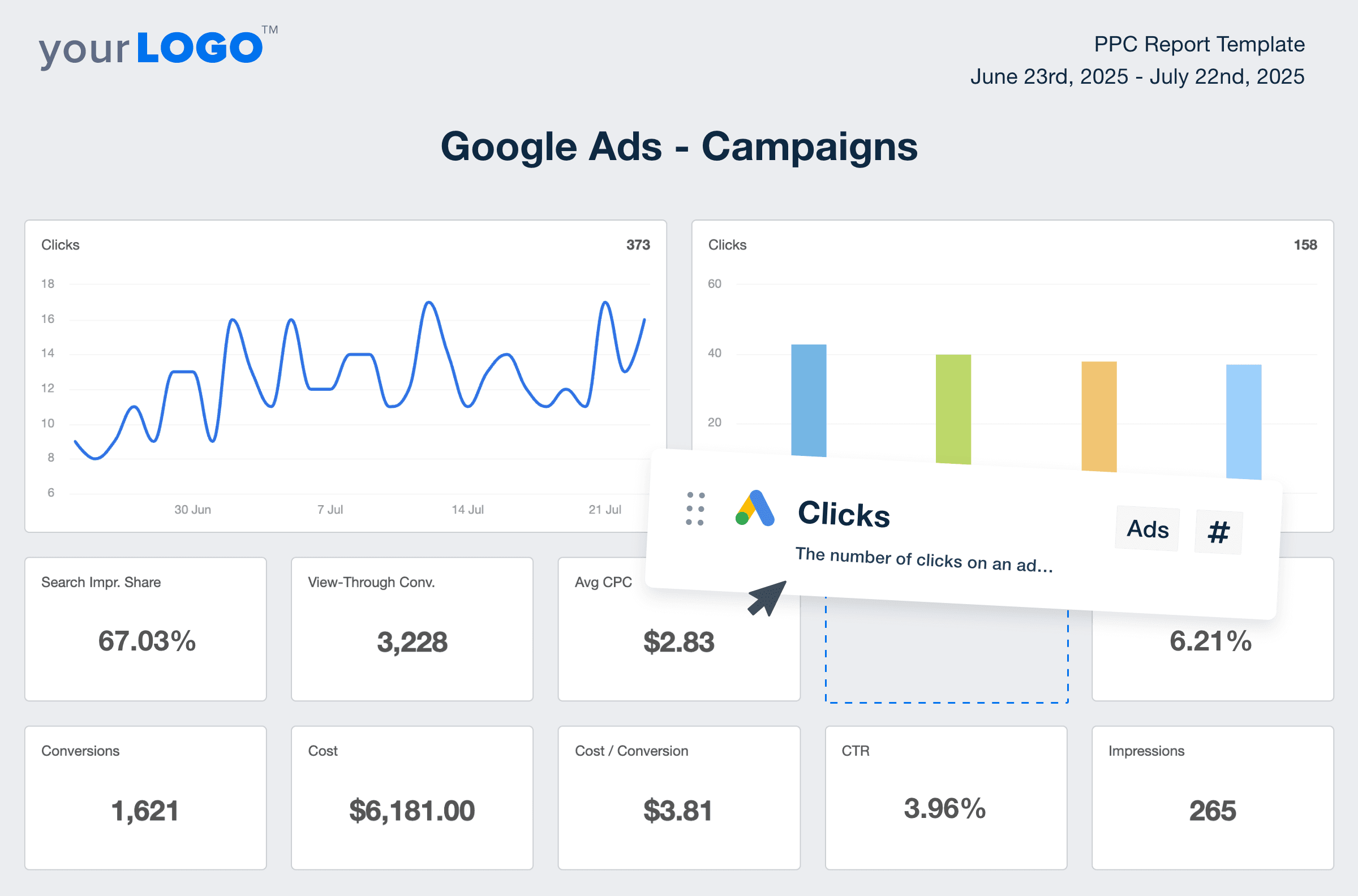
The good news is that these challenges can be effectively navigated with the right strategies and tools.
Overcoming Data Silos and Integration Issues
Data silos and integration issues are like roadblocks on your KPI tracking journey. They hinder data accessibility, impede efficient data integration, and result in inaccurate performance insights. However, with the right strategies, these roadblocks can be effectively removed.
By breaking down data silos and integrating multiple campaigns into a single reporting platform, agencies enhance data accessibility across different units, thereby increasing the dependability of KPI tracking and providing more comprehensive insights into performance.
Staying Agile With Evolving Business Strategies
Given the rapid pace of change in business strategies, maintaining agility in KPI tracking is essential for marketing agencies. Being agile in business strategy entails the ability to act and adapt swiftly, creating flexible plans that can be adjusted as necessary.
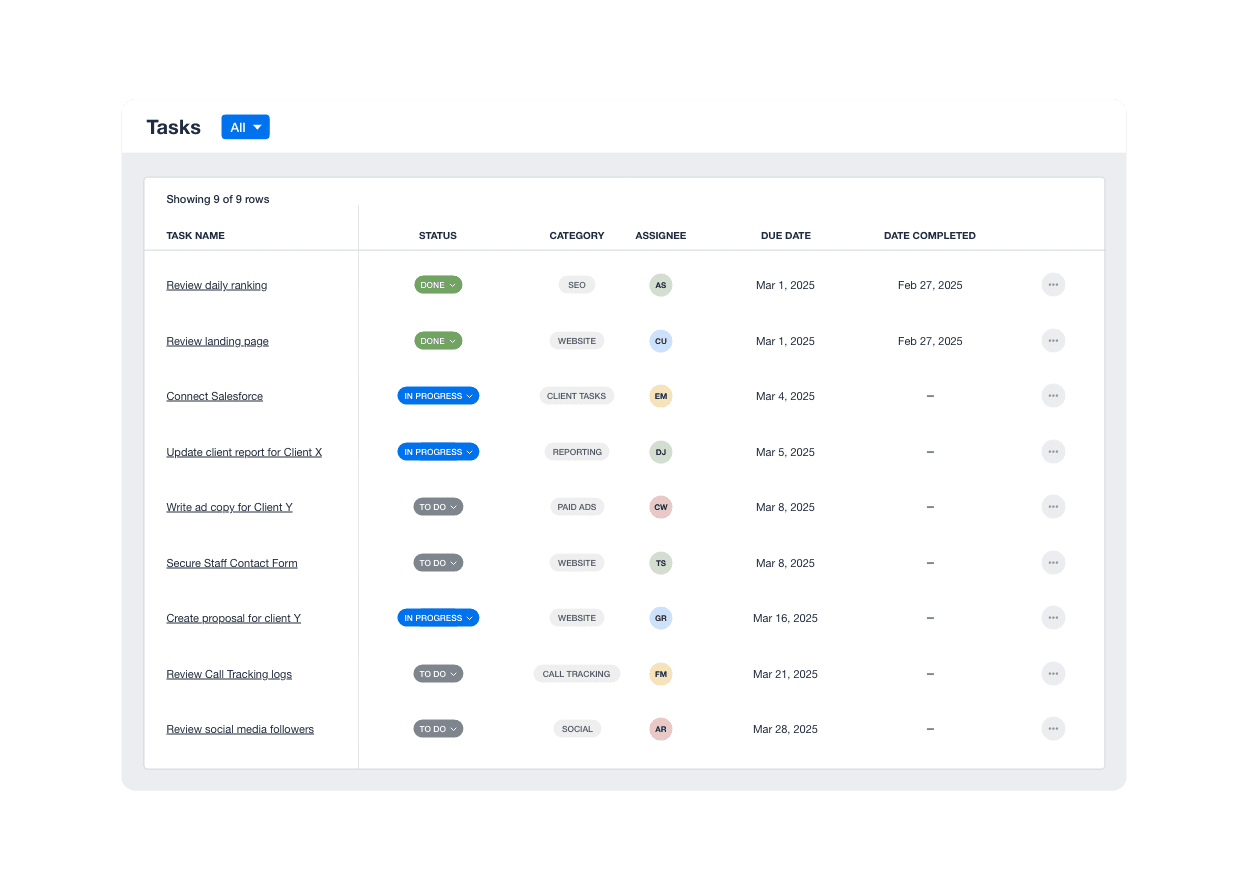
Staying agile with evolving business strategies involves:
Aligning KPIs with business objectives.
Ensuring KPIs are concise and actionable.
Clear and consistent communication about KPIs throughout the organization.
By remaining agile, marketing agencies ensure that their KPI tracking remains relevant and effective in driving growth.
Summary & Key Takeaways
KPI tracking is not just about measuring performance. It’s about guiding your agency and its clients toward strategic goals, driving growth, and creating a culture of data-driven decision-making.
It’s essential to choose the right KPIs aligned with business goals, focusing on metrics that are actionable, consistent, and provide valuable insights for strategic decision-making.
Effective KPI tracking requires both real-time and historical data to provide a snapshot of current performance, facilitate trend analysis, and enable informed decision-making.
A comprehensive approach to KPI tracking involves integrating various data sources for a unified analysis, ensuring data quality and consistency, and staying agile with evolving business strategies.
By defining the right KPIs, ensuring accurate monitoring, crafting effective dashboards, leveraging advanced tracking tools, and staying agile with evolving business strategies, you turn KPI tracking into a powerful engine for growth.

Written by
Paul Stainton is a digital marketing leader with extensive experience creating brand value through digital transformation, eCommerce strategies, brand strategy, and go-to-market execution.
Read more posts by Paul StaintonSee how 7,000+ marketing agencies help clients win
Free 14-day trial. No credit card required.



